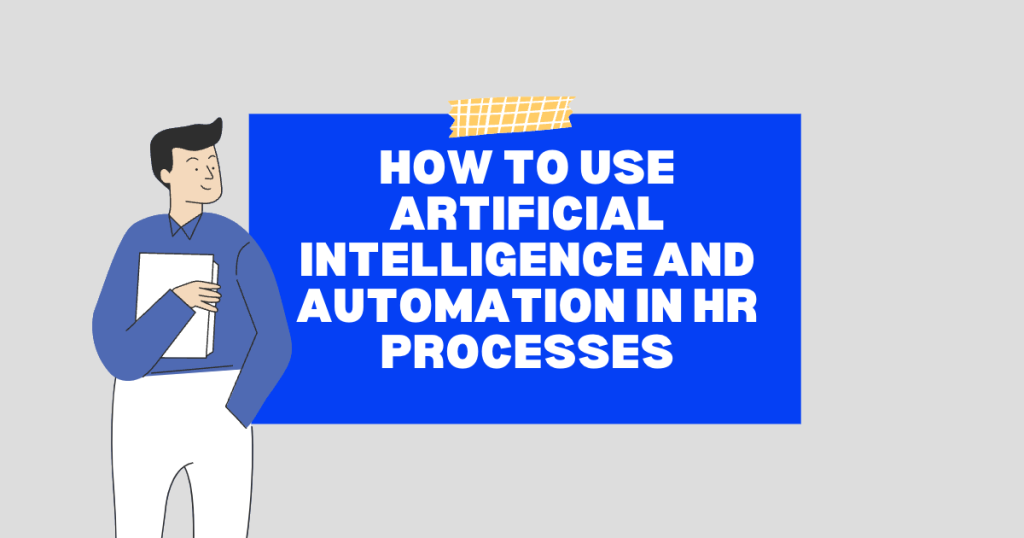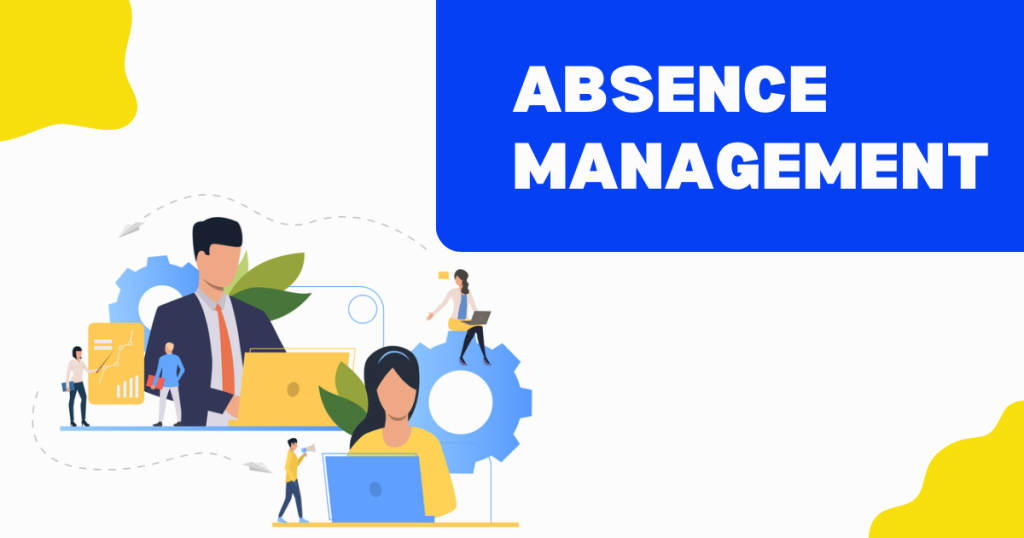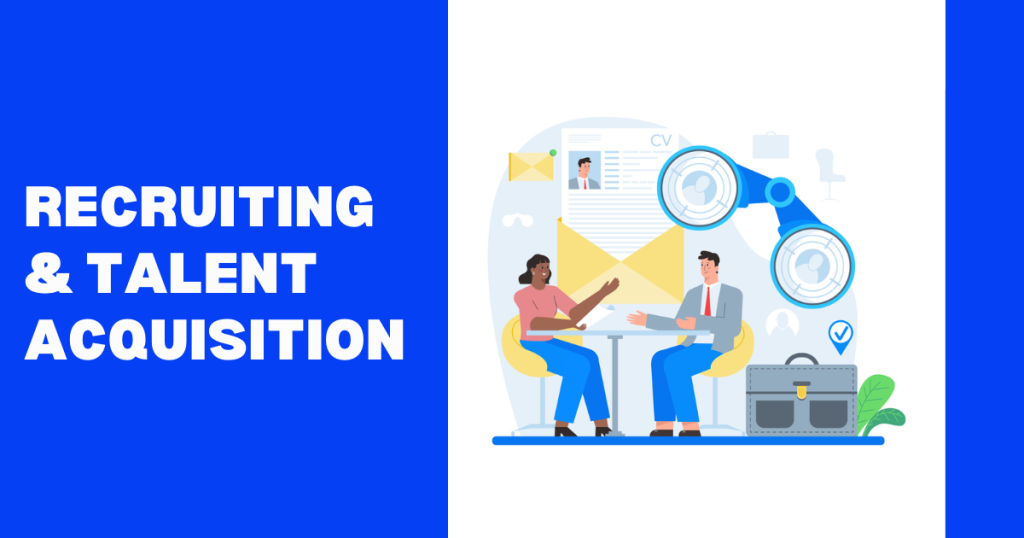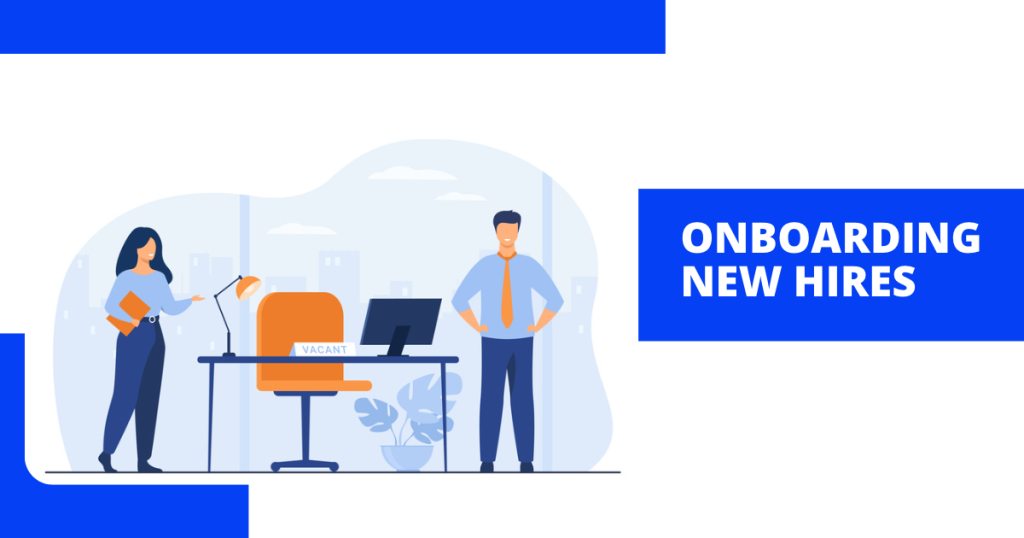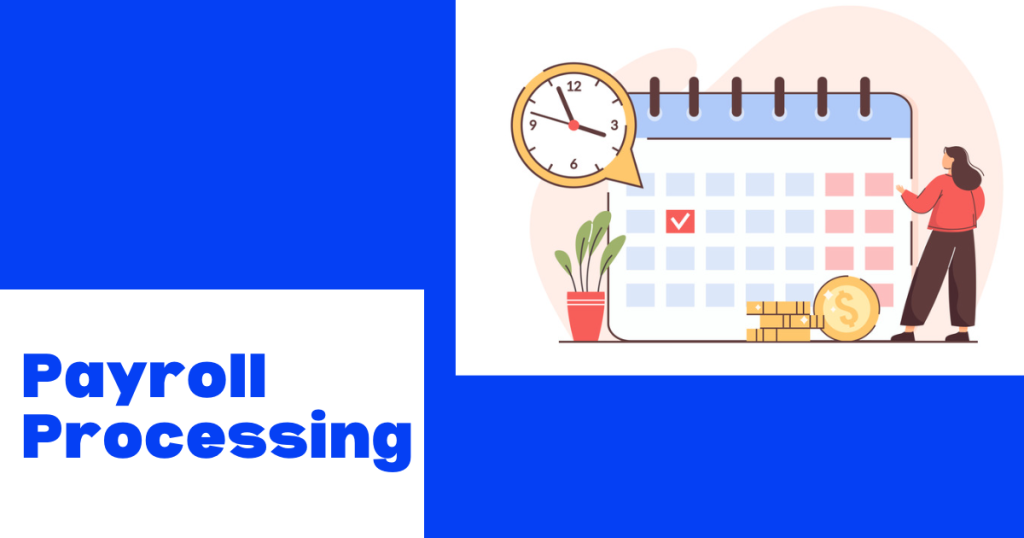Recent research has revealed that 18% of companies leveraging artificial intelligence (AI) and automation in their HR processes are seeing a 6-10% revenue increase. From absence management to payroll processing, AI can streamline HR processes more accurately than ever.
This article will explore how you can use AI and automation to manage your HR department better. So if you want to learn more about using AI to benefit your business, read on!
What Is Artificial Intelligence?
AI is an umbrella term that refers to various technologies used to create machines capable of autonomously executing tasks typically reserved for humans.
AI can be broken down into several subfields:
- Predictive Analytics
- Machine-Learning
- Natural Language Processing
- Computer Vision
Predictive analytics utilizes data to forecast specific outcomes, such as customer demand or car crashes in particular areas. Machine learning involves using algorithms to ‘learn’ from information and gain intelligence.
Natural language processing uses computer programs that understand human languages, while computer vision enables machines to recognize objects easily.
The significance of AI cannot be overstated. AI has the potential to revolutionize virtually every sector and industry, from healthcare, transportation, and education to retail, finance, and more.
With AI-driven tools, businesses can automate tedious tasks that would require countless hours of manual labor.
For instance, automation reduces time-consuming paperwork while increasing accuracy in decision-making within organizations. For customers, AI-powered platforms provide personalized services tailored to their needs, leading to increased satisfaction levels during business interactions.
In addition to improving the efficiency of everyday operations, AI has also been found to improve a company’s bottom line by reducing costs associated with human labor or errors caused by manual processes.
Furthermore, AI can help an organization increase its competitive edge by providing insights previously unavailable due to limited data resources or lack of expertise on staff.
The potential applications of AI reach far beyond what we’re already seeing today — from automating administrative tasks such as payroll processing and scheduling interviews to analyzing data sets to gain insight into customer behavior and uncovering trends in the marketplace.
As more companies begin exploring how they can use artificial intelligence for their benefit, they must understand the significance of this rapidly evolving technology — both now and in the future.
At this point, when technology continues to innovate at an unprecedented rate – artificial intelligence is no longer reserved for tech giants like Amazon or Google – it’s something businesses of any size can use with great success!
It’s time for you to take advantage of it, too – invest in learning about AI and start implementing it into your business today. Because if you don’t keep up with the ever-changing digital landscape – someone else will!
How To Leverage AI & Automation in HR Processes
Absence Management
Absence Management is managing time off from work and tracking the hours that an employee or contractor is absent. It involves setting policies for vacation, sick leave, parental leave, and other types of absences. Any organization needs to have absence management in place as it ensures compliance with labor laws and helps in reducing absenteeism in the workplace.
For example, Walmart has leveraged machine-learning algorithms to predict employee absences before they happen – allowing them to better plan for and manage staffing needs accordingly.
Similarly, Uber has implemented an AI system that automatically sends out messages when an employee is likely to take a weekend off – enabling them to respond quickly if additional coverage is required.
In addition to improving accuracy & efficiency, companies leveraging AI in absence management have also seen improved customer satisfaction levels due to reduced wait times during peak hours.
For instance, Starbucks implemented an automated scheduling system powered by AI, which resulted in shorter wait times at busy stores during peak rush hours – leading to same-store sales growth of around 6% in the US.
How to implement AI to aid your business in absence management:
- Understand Your Needs: Before implementing AI into your absence management system, you must understand some areas where you could benefit from improved efficiency and accuracy. Consider the overall size and complexity of your organization and any existing labor laws that may be applicable.
- Research Available Solutions: Once you better understand your business needs, it’s time to research different solutions that could help you meet them. There are a variety of AI-powered tools available such as Savior and WebClock, which can help automate processes like scheduling, leave tracking, and reporting.
- Create an Implementation Plan: Once you have identified the best solution for your business needs, creating an implementation plan that outlines the steps required to implement the chosen solution is vital. This plan should include timelines for each step, including testing phases and contingencies in case something goes wrong during the deployment or maintenance stages.
- Train Your Workforce: As with any new technology implementation, it’s essential to ensure that staff members are appropriately trained on how to use the new system. Depending on the system’s complexity, this may require some employees to take courses or courses offered in-house by internal trainers or outside consultants who specialize in AI solutions for HR departments.
- Monitor & Evaluate Performance: After launch, employers need to monitor how their new AI solution performs over time to ensure its effectiveness and identify any potential areas of improvement early on so they can be addressed quickly before they become significant issues. This includes monitoring user feedback directly from staff members and through data collected by the system so you can continue optimizing its performance over time.
Recruiting & Talent Acquisition
Recruiting & Talent Acquisition is the process of sourcing, attracting, interviewing, and selecting qualified people to fill job positions within an organization.
For instance, Amazon uses AI to automate candidate screening processes and match suitable candidates with job openings based on skill sets, experience, and other criteria. This has resulted in increased efficiency while reducing human bias in hiring decisions.
Another example is how Google leverages machine-learning algorithms to optimize its recruiting efforts by identifying patterns from previous successful hires, which helps them find better matches for future job postings more quickly.
Follow these steps to implement AI in your business’s Recruiting & Talent Acquisition:
- Research Available Solutions: Research solutions that could help you meet these needs, such as iCIMS Talent Acquisition, hireEZ, and RecruitBPM. These platforms leverage artificial intelligence (AI) algorithms to automate various processes, such as candidate screening and matching job openings based on skill sets and experience.
- Integrate Data Sources: Many AI-powered recruitment solutions integrate data sources such as resumes, job descriptions, and social media profiles, allowing them to make more accurate predictions about which candidates are a good fit for a specific role within your organization. When setting up these systems, all relevant data sources must be appropriately connected so no discrepancy between data sets would negatively affect results.
- Monitor & Evaluate Performance: Following the launch, employers must continuously monitor their AI solution to ensure its optimal effectiveness. Doing so allows for necessary adjustments before they become major obstacles in the future. Employers should also regularly review metrics like job fill rate, candidate retention rate, and other key performance indicators (KPIs) to determine whether their efforts are paying off, so they can make necessary adjustments accordingly.
Onboarding New Hires
Onboarding new hires is when a company brings in a new person to work for them. They will help the new hire get comfortable with their job duties and working environment. They’ll also give the new hire some information about their job, such as what tasks they need to do and how to do them correctly.
One example of a company using AI for onboarding new hires is Microsoft, which recently launched a chatbot called “Hire” that uses AI algorithms to automate various processes such as candidate screening, interview scheduling, and onboarding activities. The chatbot provides personalized onboarding experiences to new employees, where they can access information about their roles, job responsibilities, and other details, such as holidays and paychecks, in a conversational format.
The chatbot also leverages natural language processing (NLP) technology to provide context-sensitive answers to questions asked by the new hire. For instance, if the new hire has a question about time off requests or reporting structure, the chatbot could give them an accurate response that quickly addresses their need. Furthermore, it can identify common phrases employees use, such as “I don’t understand” or “Can you help me?” which allows it to anticipate their needs and provide proactive support accordingly.
In addition, “Hire” enables recruiters to track candidates throughout the hiring process so they can quickly identify any potential issues that arise during the recruitment process that could delay onboarding or cause delays in hiring decisions.
It also provides visibility into how well each employee is doing so employers can ensure they meet expectations and provide necessary guidance where needed.
Step-by-step Guide on Implementing AI in Onboarding New Hires:
- Identify the recruitment process you wish to automate: Depending on the size of your organization, you should focus on automating either the whole process or just a few parts, such as candidate screening and matching job openings based on skill sets and experience.
- Choose an AI platform: Several AI platforms are available today with features tailored to automate different stages of the recruitment process. EddyHR, BambooHR, and Freshteam are some of the top choices for AI recruitment automation solutions due to their advanced capabilities and user-friendly interface.
- Customize the platform: Once you have chosen an AI platform, you can customize it according to your needs by connecting it with other existing tools within your organization and adjusting settings for each stage of the recruiting process (e.g., candidate screening criteria).
- Automate onboarding activities: By leveraging NLP technology, you can use chatbot programs to provide context-sensitive answers to questions asked by new hires regarding their role or job responsibilities and automate onboarding activities such as paperwork and manual tasks involved during this phase.
- Provide guidance where needed: Lastly, employers should advise new hires on what tasks they need to do and how to do them properly to ensure a seamless onboarding experience for them while reducing manual efforts associated with tracking multiple candidates at once.
Performance Management
AI can also provide feedback and performance management for new hires. It can help employers give timely feedback on employee performance, identify skill gaps and opportunities for improvement, and provide recommendations for further development.
One example of a company using AI for performance management is Salesforce. The company has implemented an AI-enabled product called Salesforce Einstein that helps automate various aspects of performance management. It uses machine learning algorithms to analyze data and make recommendations on how to improve the performance of employees.
Salesforce Einstein also provides managers with insights into employee engagement levels by tracking their interactions within the enterprise system, such as emails sent and meetings attended. Through this, the platform offers personalized coaching tips and actionable advice to help managers understand what drives their employees’ engagement levels and how they can foster greater collaboration and teamwork within the organization.
How to implement AI in Performance Management:
- Identify the Performance Management Process You Wish to Automate: Identifying which aspects of performance management you would like to automate with AI is essential. This could include employee feedback, goal setting, or other processes related to tracking employee progress and performance.
- Choosing an AI Platform: A handful of AI platforms are available that can be used for performance management automation, including Synergita and Halogen Software. Both platforms are tailored for performance management and offer features such as automated analytics and recommendations for managers based on employee data.
- Automating Performance Management Activities: The platform can then automate activities related to employee feedback, such as collecting feedback from multiple sources (such as clients or colleagues) or providing automated assessments based on a predetermined set of criteria. Additionally, it can track an employee’s progress over time and provide personalized coaching tips or actionable advice on improving their performance.
- Providing Guidance Where Needed: As with onboarding new hires, it is also important to ensure guidance is provided when needed for employees to ensure they understand what tasks they need to do and how best to do them. The AI platform should also provide insights into engagement levels so managers can understand what drives their employees’ engagement levels and how they can foster greater collaboration amongst their team members.
- Tracking Progress: Finally, the AI platform should enable recruiters and managers alike to track the progress of employees throughout their employment so any potential issues that arise during this period can quickly be identified while providing visibility into how well each individual is doing, from day one up until their tenure with your organization comes to a close.
Payroll Processing
Automating payroll processing with AI can streamline the process and reduce human errors. Using AI, companies can quickly process payroll and ensure accuracy while reducing time-intensive tasks such as calculating overtime payments or tracking employee absences. AI can also automate deductions for taxes, benefits, and deductions based on a company’s set of criteria.
One example is Walmart. Walmart’s payroll process is powered by Microsoft Azure, allowing the company to integrate data from various sources, including time-tracking systems and other back-office software solutions. This allows Walmart to access up-to-date information on employee hours quickly worked and automatically generate accurate paychecks.
Additionally, Walmart uses machine-learning algorithms to identify anomalies in employee records that could lead to erroneous payments and ensures compliance with applicable wage laws such as overtime pay laws. As a result, they’ve been able to efficiently manage their workforce while providing employees with assurance that their paychecks are accurate and timely each week.
Steps in implementing AI for Payroll Processing:
- Research the different AI platforms available and decide which best suits your needs. For example, Microsoft Azure and Adobe Experience Cloud offer powerful machine-learning capabilities that can help automate payroll processing.
- Choose a trusted provider of payroll services like ADP Payroll, CheckMark Payroll, or Square. Each provider has robust payroll solutions that can be integrated with AI technologies to streamline the process and reduce errors.
- Connect your chosen platform to the provider’s API for seamless data transfer and accurate record-keeping. This will ensure all employee data is up-to-date and securely stored in the cloud, making it available anywhere at any time.
- Leverage AI technologies to automate taxes, benefits, or other deductions based on your company’s criteria for each employee’s respective payment cycle. This will ensure accuracy when calculating payments while saving time and effort. Additionally, AI can enable you to quickly identify discrepancies between budgeted versus actual costs when it comes to taxes or employee benefits-related expenses too, if needed.
- Track employee hours worked using an automated system such as a timesheet application to quickly generate accurate paychecks without manual intervention from HR teams or managers.
Conclusion
To sum it up:
- AI in Absence Management augments the accuracy and efficiency of tracking employee time off and ameliorates customer satisfaction due to shorter wait times during peak hours. Companies that have embraced this AI technology see considerable improvements within their departments, leading to increased productivity and employee morale.
- Companies can leverage AI technologies to simplify recruitment processes and accurately match qualified candidates with job openings while eliminating any human bias in decision-making. This will make operations more efficient and enhance accuracy and performance.
- AI algorithms allow recruiters to streamline activities such as candidate screening, interview scheduling, and onboarding. Furthermore, chatbots allow for the tracking of candidates throughout the hiring process so any potential issues can be swiftly identified and addressed before they cause setbacks or hold up decisions on hires.
- AI allows employers to provide timely feedback and performance management for new hires so they can progress more quickly. Through AI, companies can identify skill gaps and potential areas of improvement and provide employees with tailored recommendations on further development initiatives.
- AI enables companies to swiftly and accurately process payroll, eliminating the need for tedious tasks like computing overtime payments or tracking employee absences. In addition, AI can automate deductions based on an organization’s pre-defined taxes, benefits, and more criteria.
Overall, AI and automation in HR processes can help businesses save time and money while ensuring accuracy. So why not take advantage of these powerful technologies today? Share this blog post with your colleagues so they can benefit from implementing AI for efficient HR processing too!

